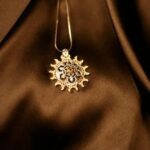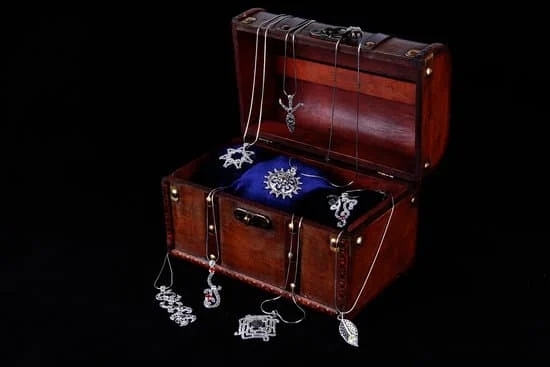Nicaraguan handmade jewelry showcases the rich cultural heritage and craftsmanship of the country, making it a unique and sought-after art form. With a history deeply rooted in tradition and symbolism, Nicaraguan jewelry is known for its distinctive designs and materials. From seeds and wood to beads and intricate metalwork, these pieces reflect the country’s vibrant culture and natural beauty.
The tradition of jewelry-making in Nicaragua has been passed down through generations, with artisans employing traditional techniques that have stood the test of time. These techniques, combined with locally-sourced materials, result in jewelry pieces that are not only visually stunning but also hold deep cultural significance.
In this article, we will delve into the world of Nicaraguan handmade jewelry, exploring its history, traditional techniques, cultural significance, artisan profiles, design inspirations, sustainability practices, where to purchase authentic pieces, and how readers can support and promote this thriving industry. Join us as we take a closer look at the artistry and heritage behind Nicaragua’s handmade jewelry.
Traditional Techniques and Materials
Nicaraguan jewelry-making boasts a rich history dating back to pre-Columbian times. The tradition of creating handmade jewelry has been passed down through generations, with artisans using traditional techniques and materials to craft unique and culturally significant pieces. Nicaraguan handmade jewelry is characterized by its use of natural materials such as seeds, wood, and beads, reflecting the country’s vibrant flora and fauna.
One of the most common techniques used in Nicaraguan jewelry-making is seed beading. Artisans meticulously thread together tiny seeds to form intricate patterns and designs, showcasing their exceptional attention to detail and craftsmanship. Another traditional technique is wood carving, where skilled artisans transform locally-sourced woods into stunning earrings, pendants, and bracelets. Beads made from various materials are also widely used in Nicaraguan jewelry, adding colorful embellishments to the pieces.
The use of these traditional techniques and materials not only showcases the artistry and skill of Nicaraguan artisans but also highlights the country’s rich cultural heritage. Each piece of Nicaragua handmade jewelry reflects a deep connection to nature and indigenous traditions, making it much more than just an accessory-it is a tangible expression of history and identity.
| Material | Description |
|---|---|
| Seeds | Various seeds from local plants are used to create intricate beadwork. |
| Wood | Artisans carve locally-sourced wood into beautiful jewelry pieces. |
| Beads | Beads made from glass, clay, or other materials are woven into the designs. |
These traditional materials not only add unique textures and colors to Nicaraguan handmade jewelry but also contribute to sustainable and eco-friendly practices within the industry.
Cultural Significance
Nicaraguan handmade jewelry holds a deep cultural significance within the country, reflecting a rich history and tradition. Jewelry-making in Nicaragua dates back centuries, with indigenous communities creating intricate pieces using traditional techniques. These jewelry pieces are not only decorative but also carry symbolic meaning, often representing aspects of Nicaraguan culture and beliefs.
One of the most iconic features of Nicaraguan handmade jewelry is the use of natural materials such as seeds, wood, and beads. For example, seeds from the guacal tree are commonly used to create colorful and unique pieces. This connection to nature is deeply rooted in Nicaraguan culture, as these materials are not only abundant in the region but also hold spiritual importance for many indigenous communities.
The cultural significance of Nicaraguan handmade jewelry extends beyond just aesthetic value. These pieces often serve as important symbols within Nicaraguan traditions and daily life. For instance, jewelry may be worn during special ceremonies or celebrations, with each piece carrying its own specific meaning or story. As such, Nicaraguan handmade jewelry is not just a form of adornment but a way for individuals to express their heritage and connect with their cultural identity.
- Nicaragua’s ethnic diversity has also influenced the design and symbolism found in handmade jewelry
- The use of specific colors and patterns may reflect regional customs or ancestral traditions
- Many designs incorporate symbols that hold religious or spiritual significance to the wearer
Artisan Profiles
Nicaragua has a rich tradition of handmade jewelry, with artisans creating stunning pieces that showcase the country’s unique cultural heritage. For generations, Nicaraguan artisans have honed their craft, passing down traditional techniques and incorporating materials that are abundant in the region. The result is an array of jewelry that not only serves as adornment but also carries deep cultural significance.
Notable Artisans
One prominent figure in Nicaragua’s handmade jewelry scene is Maria Lopez, a master beadwork artist known for her intricate designs and vibrant color combinations. Lopez comes from a long line of jewelry makers and has dedicated her life to preserving and advancing the art form.
Another renowned artisan is Carlos Mendoza, who specializes in crafting jewelry from indigenous seeds and natural fibers. His work often reflects themes from Nicaraguan folklore and nature, capturing the essence of the country’s traditions.
Personal Stories
Many Nicaraguan jewelry artisans come from humble backgrounds, relying on their skills to support themselves and their families. For some, like Sofia Ramirez, jewelry making is not just a livelihood but a way to connect with their roots and express their creativity. Ramirez learned the craft from her grandmother and has since developed her own signature style, infusing modern elements with age-old techniques.
Community Impact
The work of these artisans extends beyond creating beautiful adornments; it also contributes to the economic well-being of their communities. By supporting local artisans like Lopez, Mendoza, and Ramirez, consumers can help sustain traditional craftsmanship while empowering marginalized communities in Nicaragua. Additionally, many of these artisans are involved in initiatives aimed at mentoring aspiring young craftspeople, ensuring the continuation of this cherished art form for future generations.
Through showcasing the stories and craftsmanship of these talented individuals, we celebrate their dedication to preserving Nicaragua’s rich artistic heritage through handmade jewelry.
Design Inspirations
Nature-Inspired Designs
Nicaraguan handmade jewelry is known for its nature-inspired designs, often reflecting the country’s rich biodiversity. Artisans draw inspiration from the lush rainforests, vibrant flora, and diverse fauna that characterize Nicaragua’s natural landscapes. From intricately carved wooden pendants depicting local wildlife to seed bead earrings resembling tropical flowers, these pieces celebrate the beauty of the country’s environment.
Historical and Indigenous Influences
In addition to nature, Nicaraguan handmade jewelry also incorporates historical and indigenous influences into its designs. Some artisans infuse pre-Columbian motifs and symbols into their work, paying homage to Nicaragua’s indigenous heritage. These designs often carry deep cultural significance and serve as a testament to the country’s rich history.
Modern and Traditional Fusion
Another distinct feature of Nicaraguan handmade jewelry is the fusion of modern aesthetics with traditional craftsmanship. Artisans skillfully blend contemporary design elements with age-old techniques, resulting in unique and innovative pieces that appeal to both local and international markets. This fusion reflects the dynamic evolution of Nicaraguan jewelry-making while preserving its cultural roots.
The diverse design inspirations found in Nicaraguan handmade jewelry make each piece not only a stunning adornment but also a meaningful representation of the country’s natural beauty, cultural heritage, and artistic innovation. Whether adorned with intricate details inspired by nature or infused with historical symbolism, Nicaraguan handmade jewelry stands out as a testament to the creativity and craftsmanship of its artisans.
Sustainability and Ethical Practices
Nicaraguan handmade jewelry is not only beautiful and unique but also often made with sustainable and ethical practices in mind. Artisans in Nicaragua often prioritize eco-friendly materials and techniques, ensuring that their craft has minimal impact on the environment. Additionally, many artisans are dedicated to supporting local communities and preserving traditional craftsmanship.
Some of the sustainable materials commonly used in Nicaraguan handmade jewelry include seeds, wood, and beads. These materials are often locally sourced, reducing the carbon footprint associated with transportation. Furthermore, by using natural materials, artisans are able to create stunning pieces without relying on harmful chemicals or non-renewable resources.
In terms of ethical practices, many Nicaraguan jewelry artisans operate under fair trade principles. This means that they ensure fair wages for their workers and prioritize safe working conditions. By purchasing Nicaraguan handmade jewelry from reputable sources, consumers can support these ethical practices and contribute to the well-being of the artisans and their communities.
In addition to environmental sustainability and ethical labor practices, Nicaraguan handmade jewelry also plays a vital role in preserving cultural traditions. Through their creations, artisans often incorporate elements of Nicaraguan heritage and indigenous craftsmanship, serving as ambassadors for their country’s rich cultural history. Ultimately, choosing to support Nicaragua’s handmade jewelry industry is not only a choice for acquiring stunning accessories but also a way to promote sustainability, ethical labor standards, and cultural preservation.
Where to Purchase
Nicaraguan handmade jewelry is a beautiful reflection of the country’s rich cultural heritage and traditional craftsmanship. For those looking to purchase authentic Nicaraguan jewelry, there are several options available both within Nicaragua and internationally.
In Nicaragua, visitors can find a wide range of handmade jewelry at local markets, artisan fairs, and specialty stores. These venues offer the opportunity to meet the artisans in person, learn about their craft, and purchase unique pieces directly from the makers. Some popular destinations for shopping for Nicaraguan handmade jewelry within the country include the Mercado de Artesanías in Masaya and the Mercado Oriental in Managua.
For those outside of Nicaragua, there are also online retailers that specialize in ethically-sourced and fair trade Nicaraguan handmade jewelry. These platforms provide access to a wider audience while ensuring that artisans receive fair compensation for their work. Additionally, many of these online retailers have partnerships with local artisan cooperatives or organizations dedicated to supporting traditional crafts.
Whether you choose to shop in person or online, purchasing Nicaraguan handmade jewelry not only allows you to own a beautiful piece of wearable art but also supports local artisans and helps preserve traditional techniques for future generations.
| Location | Details |
|---|---|
| Nicaragua | Local markets, artisan fairs, specialty stores like Mercado de Artesanías in Masaya and Mercado Oriental in Managua |
| International | Online retailers specializing in fair trade Nicaraguan handmade jewelry with partnerships with local artisan cooperatives or organizations supporting traditional crafts. |
How to Support and Promote Nicaraguan Handmade Jewelry
In conclusion, Nicaraguan handmade jewelry represents a beautiful and culturally significant art form that has been passed down through generations. The unique blend of traditional techniques, materials, and cultural significance makes Nicaraguan jewelry stand out in the global market. The artisans behind these creations have poured their passion and skills into each piece, resulting in stunning designs that showcase the country’s rich heritage.
For those interested in supporting the Nicaraguan handmade jewelry industry, there are several ways to do so. One option is to directly purchase from local artisans or ethical and fair trade retailers that prioritize sustainability and ethical practices. By doing so, not only are you acquiring a one-of-a-kind piece but also contributing to the livelihood of talented craftsmen and women who rely on their art for income.
Another way to support and promote Nicaraguan handmade jewelry is by sharing your knowledge and appreciation for this unique art form with others. Whether it’s through social media, word of mouth, or organizing events to showcase these exquisite pieces, raising awareness about the craftsmanship and cultural significance of Nicaraguan jewelry can go a long way in preserving this traditional art form for future generations.
With your support, the Nicaraguan handmade jewelry industry can continue to thrive while maintaining its commitment to sustainability and ethical practices.
Frequently Asked Questions
What Products Are Made in Nicaragua?
Nicaragua produces a variety of products, including coffee, beef, tobacco, sugar, and textiles. Coffee is one of the country’s main exports and is renowned for its high quality and distinct flavor.
Which Country Has a Tradition of Making Jewelry?
Mexico has a rich tradition of making jewelry, with a history dating back to pre-Columbian times. Mexican jewelry often features intricate designs and vibrant gemstones, reflecting the country’s cultural heritage.
What Crafts Is Nicaragua Known For?
Nicaragua is known for its traditional crafts such as pottery, woodworking, and weaving. The craftsmanship of Nicaraguan artisans can be seen in the unique designs and techniques used to create handmade items that showcase the country’s cultural identity.

Welcome to my jewelry blog! My name is Sarah and I am the owner of this blog.
I love making jewelry and sharing my creations with others.
So whether you’re someone who loves wearing jewelry yourself or simply enjoys learning about it, be sure to check out my blog for insightful posts on everything related to this exciting topic!





